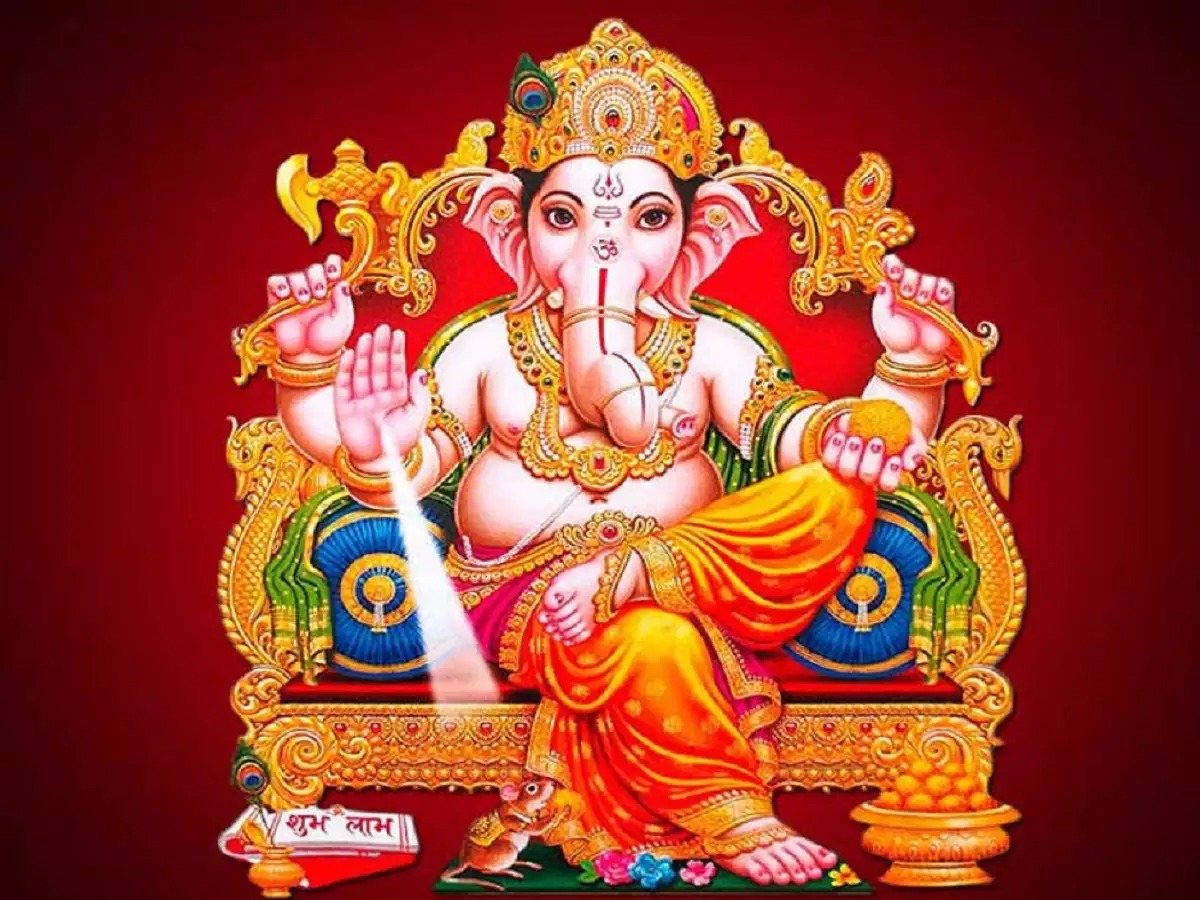– An article by Poojan Patel
The history of the clothes and accessories worn by Lord Ganesha is a fascinating aspect of Hindu mythology and tradition. Lord Ganesha, also known as Vinayaka or Ganapati, is one of the most widely worshiped deities in Hinduism. His attire and accessories have evolved over centuries, reflecting both cultural changes and artistic preferences.
Ancient Times: In ancient depictions of Lord Ganesha, he is often shown wearing minimal clothing or sometimes depicted in a simple loincloth, known as a “dhoti” or “langoti.” This simple attire symbolizes his ascetic and humble nature. During this period, the emphasis was more on his physical attributes and symbolism rather than elaborate clothing.
Contemporary Times: In contemporary times, especially during festivals and idol worship, Lord Ganesha is often dressed in more ornate and colorful attire. Devotees dress the idols in a wide variety of fabrics, including silk, satin, and cotton. These clothes are often vibrant and adorned with intricate embroidery and decorative elements. The choice of clothing can vary widely depending on regional and cultural preferences.
Aesthetics of Lord Ganesha’s Attire:
- Color Symbolism: The colors of Lord Ganesha’s attire hold significance. Red and yellow are commonly used colors, symbolizing auspiciousness, prosperity, and vitality. These colors are believed to invoke positive energy.
- Ornate Designs: The contemporary attire of Lord Ganesha often features elaborate designs and patterns. These designs can include motifs of lotus flowers, peacocks, and other auspicious symbols. These patterns are not just decorative but also carry deep spiritual meanings.
The aesthetics of Lord Ganesha’s attire and accessories not only make the idol visually appealing but also carry deep spiritual and cultural significance. The embellishments and jewelry symbolize his divine nature, while the choice of clothing and colors reflects the festive and celebratory aspect of his worship.
In Hindu iconography, Lord Ganesha is often depicted adorned with various types of jewelry that symbolize his divine and regal nature. The specific jewelry items worn by Lord Ganesha can vary depending on regional and artistic interpretations, but some common jewelry items associated with him include:
- Crown (Mukut): Lord Ganesha is often depicted wearing an ornate crown, known as a “mukut” or “kirita.” The crown is typically adorned with intricate designs, gemstones, and sometimes a crescent moon. The crown signifies his divine status and authority.
- Necklaces (Har): Lord Ganesha is adorned with multiple necklaces that drape elegantly around his neck. These necklaces can be made of various materials, including gold, pearls, and precious gemstones. They symbolize his wealth, prosperity, and divine attributes.
- Earrings (Kundala): Large earrings, often in the shape of hoops or pendants, are a common feature in depictions of Lord Ganesha. These earrings symbolize his wisdom and connection to the divine.
- Bracelets (Kangan) and Armlets (Baaju Band): Lord Ganesha is often depicted wearing ornate bracelets on his wrists and armlets on his upper arms. These jewelry items enhance his divine appearance and regal demeanor.
- Waistbands (Kamarband): A decorative waistband or belt, known as a “kamarband,” can often be seen around Lord Ganesha’s waist. This adds to his regal attire and represents his status as a divine deity.
- Anklets (Payal): In some depictions, Lord Ganesha is shown wearing anklets around his ankles. These anklets can be adorned with bells that create a melodious sound, symbolizing the auspicious presence of the deity.
- Rings (Anguthi): Some depictions of Lord Ganesha include rings on his fingers, further emphasizing his divine attributes and regal splendor.
Minimalistic Aesthetics:
- Simplicity in Form: Eco-friendly Ganesha idols embrace minimalism in their design. They often have a simple, unadorned form, with clean lines and a focus on the deity’s iconic features—his elephant head and potbelly. This minimalistic approach reinforces the idea that devotion and spirituality can be expressed without extravagance.
- Earthy Tones: Clay idols are typically left in their natural earthy colors, which can range from various shades of brown to terracotta. These tones not only connect with the eco-friendly theme but also resonate with the idea of Ganesha as a symbol of earthly abundance and grounding.
- Lack of Extravagant Accessories: Unlike traditional idols that may be adorned with elaborate jewelry and clothing, eco-friendly clay idols are often left unadorned. This simplicity underscores the focus on environmental consciousness rather than opulence.
- Textured Finish: Some artisans add subtle texture to the clay idols, giving them a handcrafted and rustic appearance. This adds to their charm and uniqueness.













